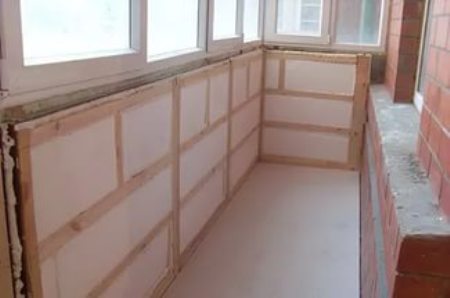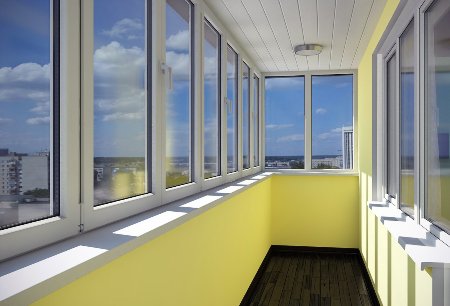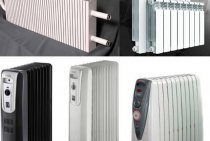How and how to insulate the ceiling on the balcony, loggia
It was previously noted that the ceiling on the balcony can be insulated with materials of various types. Each of them deserves separate consideration.
Insulation of the ceiling on the balcony with foam
If the owner has chosen polystyrene foam, then he should purchase plates with a thickness of about 5 cm. Surface finishing is carried out with PVC panels, clapboard, drywall or simple putty. The gaps remaining after laying the slabs must be completely covered with mounting foam.
Provided that the putty finishing method is chosen, the foam boards must be glued to the ceiling. For more reliable fastening, dowels in the form of fungi are used. Next, the insulation layer is covered with a plaster mesh, on which putty is applied, and after it dries, paint.
Ceiling insulation with foil insulation
Sheets of isolon are spread over the surface of the ceiling so that the foil layer looks inside the loggia. Then the insulation is pressed with a rail-clamp. The purpose of the foil layer is to reflect thermal radiation. This can also be used as an additional "bonus" if you use isolon in conjunction with foam or foam. Then he will act as a vapor barrier.
How effective the use of polyethylene foam will be depends on the thickness of its sheets. Usually it is 5-20 mm. But still, it will not work to provide decent thermal insulation with isolon alone. Therefore, other options need to be considered.
Insulation of the ceiling on the balcony with foam
The procedure for insulating a balcony ceiling with foam plastic is no different from that carried out when using conventional foam. The steps are the same here. The advantage of extruded polystyrene can be called its highest moisture resistance, which is absent from expanded polystyrene.
Although penoplex is quite expensive, buying it will be the right decision. Penoplex is not afraid of moisture, insects, mold. Therefore, it is used even when there is a need to insulate a room with high humidity.
Insulation of the ceiling on the balcony with mineral wool
The difficulty of working with mineral wool is that it deteriorates from high humidity. The fixing of such a heater is carried out against the elements of a pre-assembled frame. The owner in the process of work is obliged to use personal protective equipment, because mineral wool emits corrosive dust. It settles on the skin, can get into the eyes or respiratory tract. This must be avoided.
These are the main options for insulating the ceiling on the loggia. The owner who correctly performed such an event will be duly rewarded.
Foiled polystyrene foam in ceiling insulation
Warming with the help of this material is carried out in cases where the "native" ceiling of the balcony or loggia is smooth, and the planned sheathing is rigid. Otherwise, at a significant roughness, the insulation may be damaged. With soft skin, there is a high probability of deformation of the material over time.
Foiled polystyrene foam is suitable for flat surfaces
For installation, it is enough to prepare a piece of insulation corresponding to the dimensions of the balcony ceiling. Then, stretching it under the ceiling plate, fix it with three or four flat wooden slats. On top of the expanded polystyrene, sheathing is carried out with sheets of drywall or lining.
Insulation of a balcony or loggia, the procedure for performing work
Insulation of the loggia is desirable to produce in the case when the repair project takes into account the item on its high-quality glazing. The moment is not even important here: whether it will be combined with an apartment or remain a full-fledged loggia.
The insulation made, even in cases of non-connection, in addition to creating special comfort in the winter period on the loggia, will significantly reduce heat loss from the apartment. This option will give a positive result, even if a warm floor or an additionally equipped battery is not made on the loggia.
Usually, high-quality glazing of a loggia or balcony is done even before insulation work. Before ordering glazing, you need to think carefully: what exactly and how the ceiling will be insulated. This is necessary in order to understand exactly what should be the thickness of the insulation and, accordingly, the decorative row.
To learn how the complex insulation of the balcony is performed, watch the video:
https://youtube.com/watch?v=YKO00flP1tA
How and how to insulate the ceiling on the balcony, loggia
Insulation of the ceiling on the balcony with foam
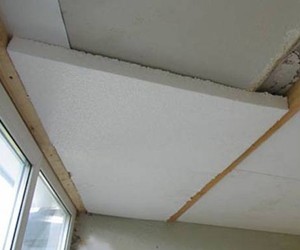
To insulate the ceiling on a loggia or balcony, it is usually carried out with the help of foam plastic plates 50 mm thick. PVC panels, drywall or putty are mounted on top of the insulation. You can insulate the ceiling under the stove. Insulation sheets cut to size are inserted into the installed logs and blown with mounting foam.
If you decide to insulate the ceiling on the balcony with foam plastic under putty, then the foam plastic is glued to the plate with glue, then it is additionally fixed with dowel fungi - in the center and in the corners of the sheet.
A plaster mesh is glued on top, the entire structure is puttied with facade plaster and, after drying, painted with a water-based emulsion.
Ceiling insulation with foil insulation
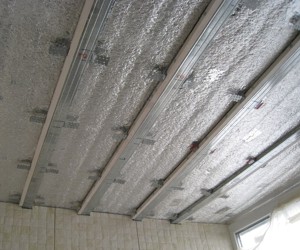
The foil insulation is spread over the plate and a rail is screwed onto it - a clamp.
The efficiency of foiled polyethylene foam is high, since the foil acts as a thermal reflector. Often, isolon is used in addition to foam or polystyrene, assigning it the role of a vapor barrier and an additional insulating layer.
The effectiveness of polyethylene foam also depends on the thickness, which ranges from 1 to 20 mm.
If you want to really do high-quality work so that warm air does not quickly escape from the room through the ceiling, then you should pay attention to heaters, the description of which is given below in this article.
Insulation of the ceiling on the balcony with foam

We have already considered the issue of insulating the ceiling in the apartment, so the question of how to insulate the ceiling on the loggia with penoplex should not cause bewilderment.
Insulation with extruded polystyrene foam occurs in the same way as with foam plastic. Due to its density, penoplex retains heat better, and is also not afraid of moisture.
Penoplex, despite the high cost, is the most durable and warm material, which, moreover, is not afraid of high humidity.
In extruded polystyrene foam, insects will not start, it is not subject to decay, thanks to which the insulation is used in wet rooms - when insulating ceilings in a bathhouse and sauna.
Insulation of the ceiling on the balcony with mineral wool
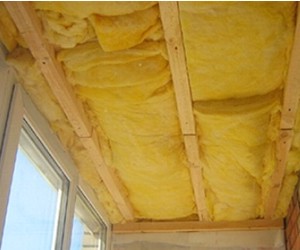
You can not insulate the balcony ceiling only if your neighbor from above has well insulated the floor on his balcony or loggia. And then, the diligence of neighbors may not affect the state of your affairs and comfort in the room.
Mineral wool is laid in a frame or on a suspended frame. The effectiveness of insulation depends on the thickness of the insulation. When working with any kind of mineral wool, it is advisable to use protective equipment - goggles, gloves and wear closed clothing.
Carcinogenic dust is harmful to the respiratory tract, getting on the skin, causing itching and irritation.
